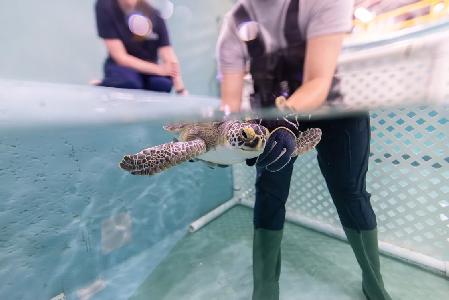Soon students from Digital Harbor High School will be designing websites for small businesses, nonprofits and artists in Baltimore city. And as they construct websites—and complete the requisite coding coursework in HMTL, CSS and PHP, for instance—they’ll earn scholarship money to be used toward paying for their college educations.
It’s an initiative called STEM Engine, one of several programs run by the Digital Harbor Foundation in Federal Hill, an “on-the-job training ground for high schools students [to work] in web design and development,” said Shelly Blake-Plock, co-executive director of the Digital Harbor Foundation.
The program itself will be hosted at the foundation’s forthcoming Rec2Tech Center on Light Street in Federal Hill. A small team of high school students from Digital Harbor will be the first crop of STEM Engine participants, but as Digital Harbor Foundation recruits more students from other city high schools—several of its EdTech fellows teach in private and public city high schools—the plan is to have teams of students doing web development and design work out of the center under the tutelage of a tech mentor.
Watch a video featuring Rose Burt, the director of the Federal Hill Rec2Tech Center:
http://www.youtube.com/v/KBeobm6eyl4?version=3&hl=en_US&rel=0
“[DHF has] partner relations with a couple web-design houses around town, [and] a lot of lower-end work they don’t have the ability to do just because of costs,” said Black-Plock. “We can give them a very cost-effective way to get a website done, and they know that they’re helping in the training of real skills for students in web design.”
Enter STEM Engine, which Blake-Plock said is a “small, nonprofit web design” shop. Students at the Rec2Tech Center first take classes in coding and custom WordPress installations, and then are assigned web development work for businesses in Baltimore by DHF. The money earned from finishing different projects goes into an account from which scholarship funds are drawn. Students earn more scholarship dollars as they hit a variety of learning milestones: for example, the time spent on individual projects, or the design and coding skills learned.
In effect, Digital Harbor Foundation is following through on what co-executive director Andrew Coy advocated for at Ignite Education in September: creating a “pipeline of local talent,” or students equipped with the necessary skills to find tech work in the city.
Watch Andrew Coy’s talk from Ignite Education:
http://www.youtube.com/v/DSwLiY4Uv6U?version=3&hl=en_US&rel=0
Precisely what skills are necessary, however, is a question of some dispute.
While Lance Lucas, the founder of the nonprofit Digit All Systems, starts students with A+ certifications, others in Baltimore’s tech community have advocated for technology education that puts more emphasis on training students to be software engineers or competent programmers. As Lucas said, “There are a lot of dueling ideologies about how we should advance our technology education.”
But the focus of STEM Engine is unequivocally on accomplishing real-world outcomes: taking what Lucas calls the city’s “untapped population,” providing them adequate tech training and education and helping them find work inside the city.
“The whole thing [about STEM Engine] is real projects that have an impact in the community,” Blake-Plock said.
Funding for the program, to start, was contributed by the Annie E. Casey Foundation and a host of private donors, said Blake-Plock. Over time, as students complete projects for businesses and nonprofits—and are paid for the work—the money earned will help create a self-sustaining operation.
“One of the things that we’re really interested in as a foundation is … creating self-sustaining situations,” said Blake-Plock. “This is a natural one. Once you have a flow of clients coming in, like any business, you’re going to have return, and you’re going to be able to reinvest in what you’re doing. The reinvestment here is actually in the kids.”
Join the conversation!
Find news, events, jobs and people who share your interests on Technical.ly's open community Slack

Baltimore daily roundup: The city's new esports lab; a conference in Wilmington; GBC reports $4B of economic activity

Baltimore daily roundup: Find your next coworking space; sea turtle legislation; Dali raided and sued

Baltimore daily roundup: Johns Hopkins dedicates The Pava Center; Q1's VC outlook; Cal Ripken inaugurates youth STEM center

